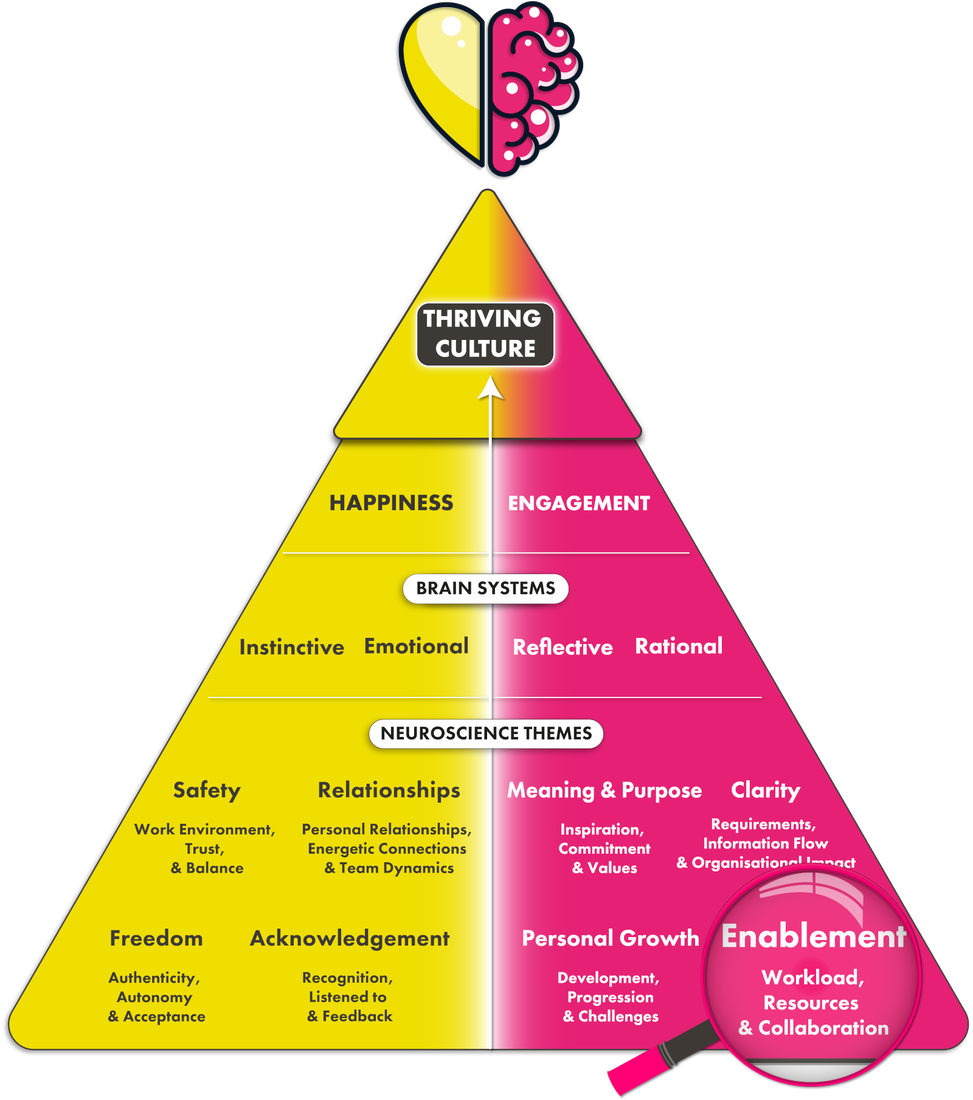Menu


Employee engagement levels can be influenced by resource-accessibility, which is associated with the Rational brain system in our neuroscience model.
If you’ve just landed here, we recommend heading over to our brain systems and neuroscience themes pages for an introduction to our neuroscience model and methodology. Otherwise, read on to find out how our access to resources impacts workplace engagement.

Employees need to feel heard and valued by their employers, to be supported emotionally and mentally, treated as humans, not as a cog in a machine. It is up to leaders to not only provide their teams with the tangible resources needed to get the job done but the social and emotional tools to ensure they have the skills to protect their well-being so that they can be fully engaged and happy at work. There are four resources leaders should lean into in order to enable their employees to be their best selves.

Frustration can come up in organisations when everyone is not on the same page. So the better you are at communicating, the more it helps to reduce this pain and frustration. People often go for what’s tangible when trying to fix frustrations, but it’s the intangible that can make such a fundamental difference. Communication is not about technical skills but about human skills.
When leaders launch projects that tank, it’s because there’s no engagement or communication with the rest of the team. Conversely, in times when project launches were successful, it is because key stakeholders were included in the journey, and a lot of testing took place. It’s because people were given the chance to socialise and give feedback. Even if the feedback is ignored, space is given so when the product is launched, there is a sense of collaboration.
The workforce has changed, and leaders are being effectively forced to do some real work in developing their emotional intelligence. People ask a lot more questions before they come into a company, and when they leave, they have outlets like Glassdoor to express their emotions and feelings about their workplace. This is unavoidable. The next generation needs an emotional intelligence space in order to work and operate. They need to work with leaders who really spend time getting to know them, understanding them, and building relationships with them.
Trying to figure out what a larger population of people wants doesn’t make much sense. You can’t expect 12, 15, or 20 people to figure out what 200 to 20,000 people want. It’s never going to translate. When working across countries, which is how a lot of organisations are working nowadays, it’s very important to ask questions and then base solutions on the feedback you receive. This way, you can create something that’s tailored, so people see that you are actually doing something with what they’re sharing.
If your people are sharing and nothing’s happening with it, you’re going to get a lot of what’s the point of sharing. Show you’re actually listening, and ask questions like what would they like to see happen in certain situations. You’re obviously going to get some wild and out-there suggestions, but you also get some good ones. Use their feedback to offer other training, coaching, and mentoring sponsorship around particular topics, which can be very targeted. Use the resource of your people to crowdsource what they really want so you can provide the right resources for them in a way that’s more unique and tailored-made for your organisation’s culture.
Many times people struggle with change, particularly in organisations because there’s a lack of understanding of the WHY. Leaders are often poor at explaining this. Sometimes the why does not always have to make sense, but employees need something to hold on to when change happens. Leaders should explain why the change is needed because it shows that time and thought have been put into the decision. And next, they should give their people time to grieve and process the change. Often we don’t give that to people. We treat them like robots, change happens, get on with it, and move forward. That’s not reality; it’s not human nature. People need to be able to grieve, mourn, and let the old stuff go before they can move forward with new changes.
*This is an excerpt from the Happiness and Humans Podcast with Sope Agbelusi, Founder of The Mindset Shift. Click here to listen to the full podcast.
Related articles
Get in touch for a platform tour and a chat with one of our experts to see how we can help you.
Use our ROI calculator to discover how much we can improve your business performance.